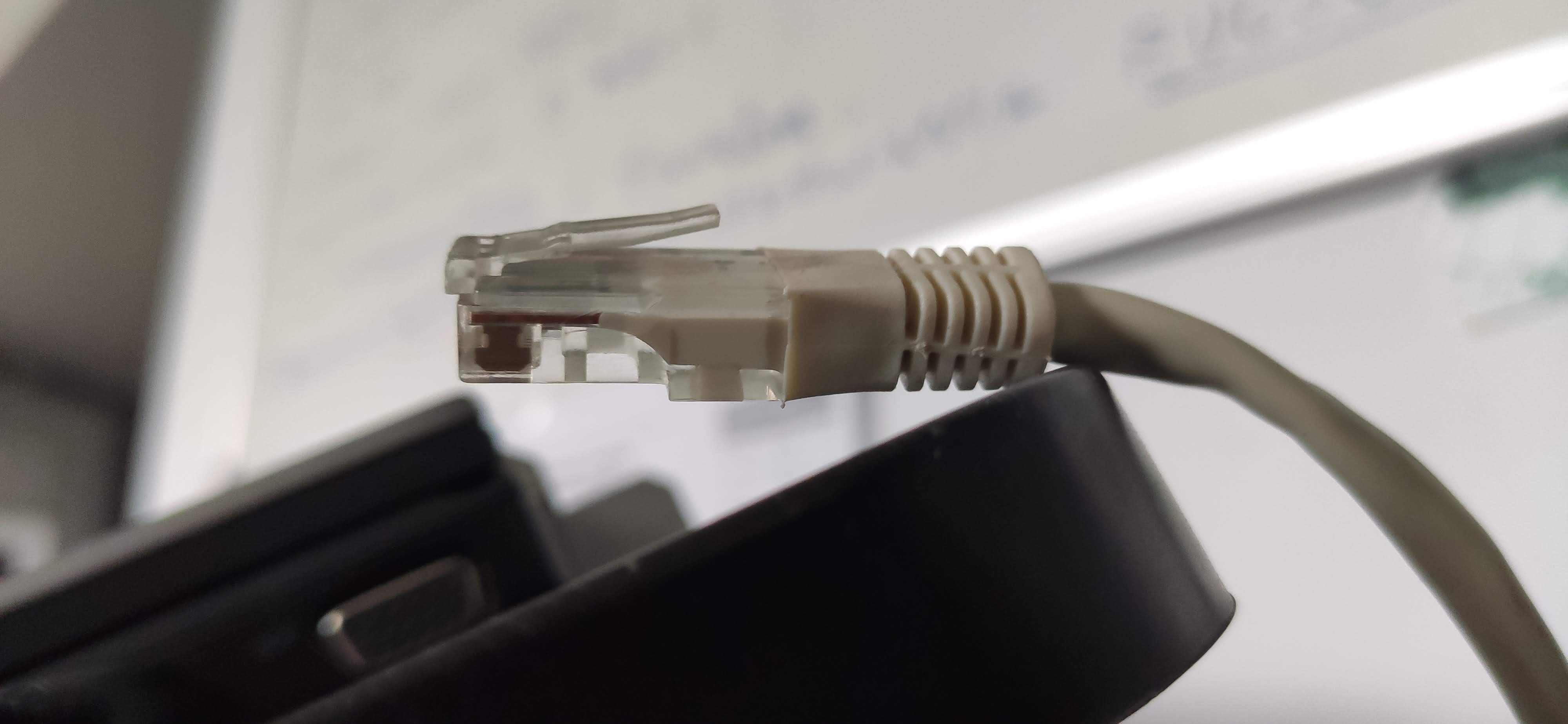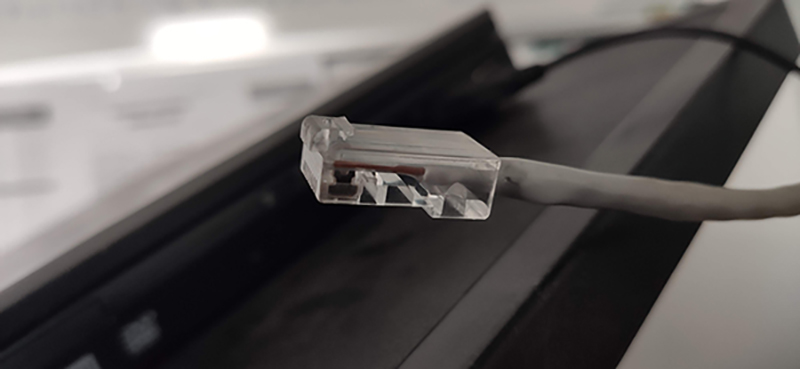Basics of networking
14. Network performance. Methods of reducing network traffic.
14.1. Quality of twisted pair cable
The workmanship of twisted pair cables is influenced by:
- the workmanship of the copper conductor, i.e. the purity of the metal, the retained profile dimensions
- the quality and quantity of insulation.
Depending on the amount of insulation and the shielding methods used (protection against interference), twisted pair cables are defined by category 1 to 8 and the type of shielding: U - unshielded, F - foil shielded, S - mesh shielded, SF - foil and mesh shielded. A higher category of cable ensures faster data transmission, for example: category 5 UTP, ScTP, STP ensures transmission up to 1 Gb/s; category 6 UTP, ScTP, STP - 10 Gb/s.
Network cables are terminated with RJ45 connectors. The quality of the material used and the RJ45 shielding obviously affects data transmission.
Examples of damage to twisted pair cables
In video 1, we see a Category 6 cable made in a factory using a specialised production line. The cable inserted into the socket retains its properties and the RJ45 termination works correctly after repeatedly connecting the computer. The protection against unwanted cable falling out works correctly - a characteristic click can be heard. Also, the cable cannot be pulled out without releasing the protection. This condition of the cable guarantees correct data transmission.

The picture shows a good quality network cable with the correct RJ45 plug.
Video 2 shows a self-made cable using a poor RJ45 plug. The poor quality of the plastic leads to breakage of the protection. This damage means that the cable can fall out of the socket - data transmission will be interrupted.

Video 4 - twisted pair cable with poor quality insulation. The thin insulation does not sufficiently protect the twisted pair from mechanical damage.
Video 5 and 6 - Category 5e cable. The outer insulation has fallen out of the RJ45 plug. The respective wire pairs must be twisted in order to neutralise signal transfer interference. In this case, the correct twisting of the pairs is not ensured.
